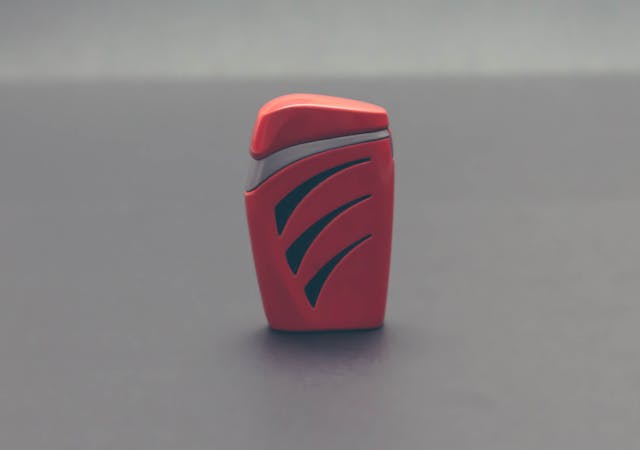Crafting a custom lighter mold is a unique and rewarding project that combines creativity and precision. Whether you’re designing molds for resin art, personalizing lighters for gifting, or exploring new crafting hobbies, understanding how to make a lighter mold is essential. This guide will walk you through every step, ensuring your project is a success.
Creating lighter molds requires the right tools, techniques, and attention to detail. A well-made mold is durable, functional, and visually appealing. Whether you’re a beginner or an experienced craftsperson, this guide provides detailed insights, ensuring you can confidently make a lighter mold at home.
Choosing the Right Materials to Make a Lighter Mold
The materials you choose greatly impact the quality of your lighter mold.
Silicone Rubber for Durability
Silicone rubber is the most popular material for making molds due to its flexibility, heat resistance, and detail retention.
Resin for Creative Projects
Resin is ideal for crafting lightweight and colorful molds, perfect for decorative purposes.
Alternative Materials
Clay and plaster can also be used, though they lack the durability and precision of silicone and resin.
Selecting the right material ensures your mold’s longevity and effectiveness.
Tools Needed to Make a Lighter Mold
Having the proper tools is essential for a successful project.
Basic Tools
- A mixing bowl for combining silicone or resin.
- A stirring stick for even mixing.
- Measuring cups for accuracy.
Specialized Tools
- A mold box to hold the material in place.
- A vacuum chamber to remove air bubbles.
Investing in quality tools will make the process of creating a lighter mold smoother and more enjoyable.
Preparing the Workspace
Creating a clean and organized workspace is crucial when learning how to make a lighter mold.
Clean Surfaces
Ensure your workspace is free from dust and debris, which can ruin your mold’s surface.
Adequate Ventilation
Proper ventilation is important when working with materials like resin or silicone.
Safety Measures
Wear gloves and a mask to protect yourself from chemicals and fumes.
By preparing your workspace, you’ll set yourself up for success and minimize potential errors.
Designing the Lighter Mold
A well-thought-out design ensures your mold meets your functional and aesthetic needs.
Sketching the Design
Start by sketching your design on paper to visualize the final product.
Measuring Dimensions
Take precise measurements of the lighter to ensure a snug fit.
Adding Personal Touches
Incorporate unique patterns or engravings to make your mold stand out.
Focusing on design helps create a mold that is both practical and visually appealing.
Mixing Materials for the Mold
The mixing process is a critical step in creating a lighter mold.
Accurate Measurements
Follow the manufacturer’s guidelines for the correct ratio of silicone or resin to hardener.
Avoiding Air Bubbles
Use a vacuum chamber to eliminate air bubbles, ensuring a smooth mold surface.
Proper Mixing Techniques
Stir the mixture slowly and thoroughly to prevent uneven curing.
Mastering the mixing process ensures your mold is durable and free from imperfections.
Pouring the Material
Pouring the material into the mold box requires precision and care.
Slow and Steady Pouring
Pour the material slowly to avoid trapping air bubbles.
Leveling the Surface
Use a spatula to level the surface and ensure an even mold.
Allowing Adequate Curing Time
Let the material cure for the recommended time to achieve optimal results.
Taking your time during this step ensures a high-quality final product.
Releasing the Mold
Once the material has cured, it’s time to remove the mold from the mold box.
Gently Removing the Mold
Use a knife or your hands to carefully release the mold without damaging it.
Inspecting for Imperfections
Check the mold for any flaws or uneven areas that may need fixing.
Cleaning the Mold
Clean the mold with soap and water to remove any residue.
Properly releasing and inspecting the mold ensures it’s ready for use.
Using the Lighter Mold
Now that your mold is complete, it’s time to put it to use.
Pouring Material into the Mold
Pour resin or another material into the mold to create the lighter.
Removing the Finished Product
Carefully remove the lighter once the material has cured.
Customizing the Lighter
Add paint, engravings, or other personal touches to make it unique.
Using your mold effectively allows you to create beautiful, functional lighters.
Troubleshooting Common Issues
Even with careful planning, issues can arise during the process.
Air Bubbles in the Mold
Use a vacuum chamber to remove air bubbles and create a smooth surface.
Uneven Edges
Trim uneven edges with a sharp knife or sandpaper.
Mold Not Curing Properly
Ensure you’ve followed the manufacturer’s instructions for mixing and curing times.
Addressing these issues promptly ensures a flawless finished product.
Benefits of Learning to Make a Lighter Mold
Creating your own lighter mold has several advantages.
Cost-Effective
Making your molds saves money compared to buying pre-made options.
Customizable
Design molds to suit your exact preferences and needs.
Creative Fulfillment
Enjoy the satisfaction of crafting something unique and functional.
Learning how to make a lighter mold is a rewarding experience that allows for endless creativity.
Conclusion: Mastering the Art of Making a Lighter Mold
Crafting a lighter mold is a skill that combines creativity, precision, and patience. By following this comprehensive guide, you’ll gain the knowledge and confidence to create custom molds for personal or professional use.
From selecting the right materials to mastering mixing techniques, each step is crucial in achieving a high-quality result. Troubleshooting common issues and adding personal touches ensure your project is a success.
Whether you’re a crafting enthusiast or a professional, learning to make a lighter mold opens the door to endless possibilities. Embrace the process, and enjoy the creative journey.





